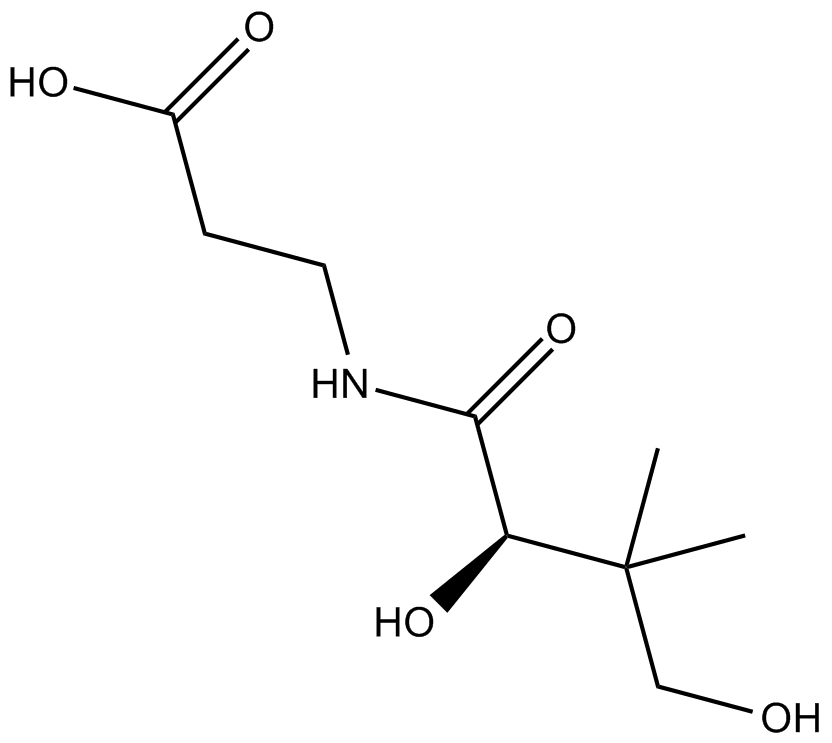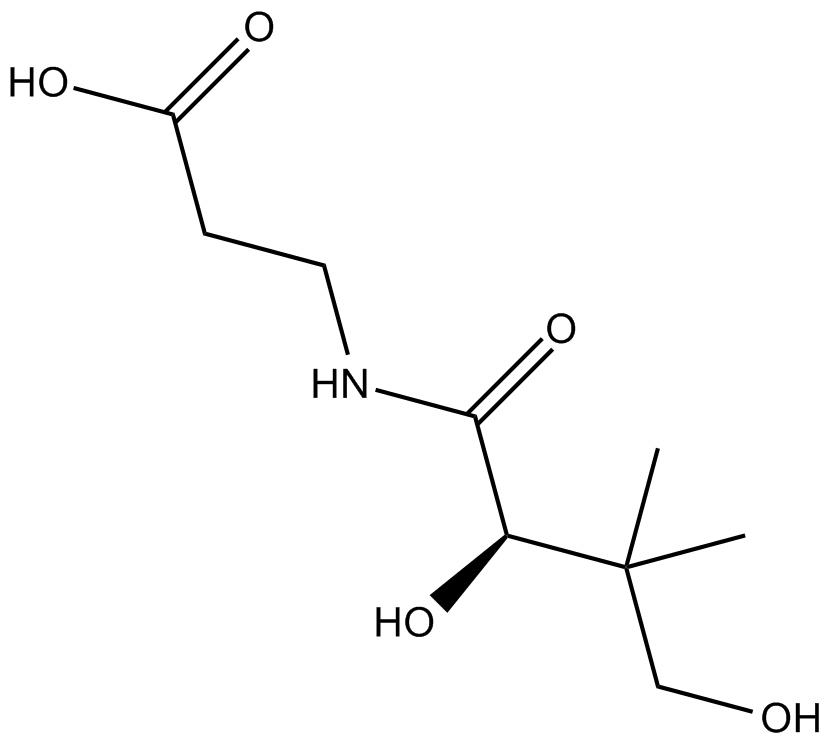D-Pantothenic acid
D-Pantothenic acid (vitamin B5) is a water-soluble vitamin and is an essential nutrient to synthesize coenzyme-A, fats, proteins and carbohydrates.
D-Pantothenic acid is a water-soluble vitamin. In rabbits, pentothenate (20 mg/kg) significantly increased aponeurosis strength after surgery and improved the strength of the skin. Also, pentothenate significantly increased the fibroblast content of the scar during the fibroblast proliferation phase [1]. Pantothenic acid deficiency increased occurrence of hypertension due to adrenal regeneration [2]. In rabbits, cerebellar and forebrain slices were able to accumulate and phosphorylate pantothenic acid. However, medium-chain fatty acids, probenecid and ouabain inhibited pantothenic acid accumulation by forebrain slices and inhibited conversion to CoA [3]. In ICR mice, pantothenic acid significantly reduced valproic acid (VPA)-induced exencephaly, which suggested that pantothenic acid inhibited neural tube defects induced by VPA [4].
References:
[1]. Aprahamian M, Dentinger A, Stock-Damgé C, et al. Effects of supplemental pantothenic acid on wound healing: experimental study in rabbit. Am J Clin Nutr, 1985, 41(3): 578-589.
[2]. Schwabedal PE, Pietrzik K, Wittkowski W. Pantothenic acid deficiency as a factor contributing to the development of hypertension. Cardiology, 1985, 72 Suppl 1: 187-189.
[3]. Spector R. Development and characterization of pantothenic acid transport in brain. J Neurochem, 1986, 47(2): 563-568.
[4]. Sato M, Shirota M, Nagao T. Pantothenic acid decreases valproic acid-induced neural tube defects in mice (I). Teratology, 1995, 52(3): 143-148.
| Physical Appearance | A solid |
| Storage | Store at -20°C |
| M.Wt | 219.23954 |
| Cas No. | 79-83-4 |
| Formula | C9H17NO5 |
| Solubility | ≥11.15 mg/mL in DMSO with gentle warming; ≥24.8 mg/mL in H2O; ≥3 mg/mL in EtOH with gentle warming and ultrasonic |
| Chemical Name | 3-[[(2R)-2,4-dihydroxy-3,3-dimethylbutanoyl]amino]propanoic acid |
| SDF | Download SDF |
| Canonical SMILES | CC(C)(CO)[C@H](C(NCCC(O)=O)=O)O |
| Shipping Condition | Small Molecules with Blue Ice, Modified Nucleotides with Dry Ice. |
| General tips | We do not recommend long-term storage for the solution, please use it up soon. |
Quality Control & MSDS
- View current batch:
Chemical structure









